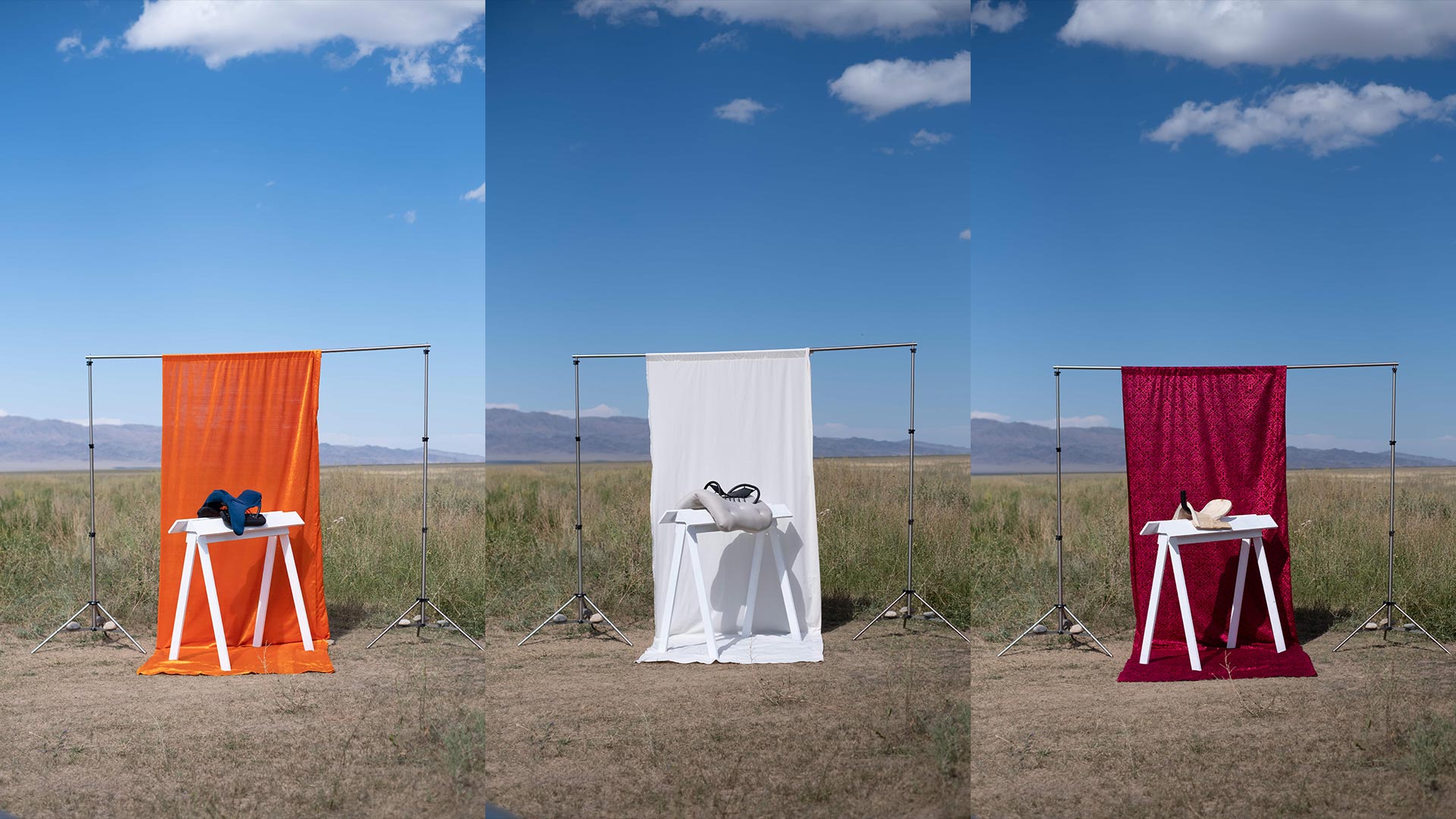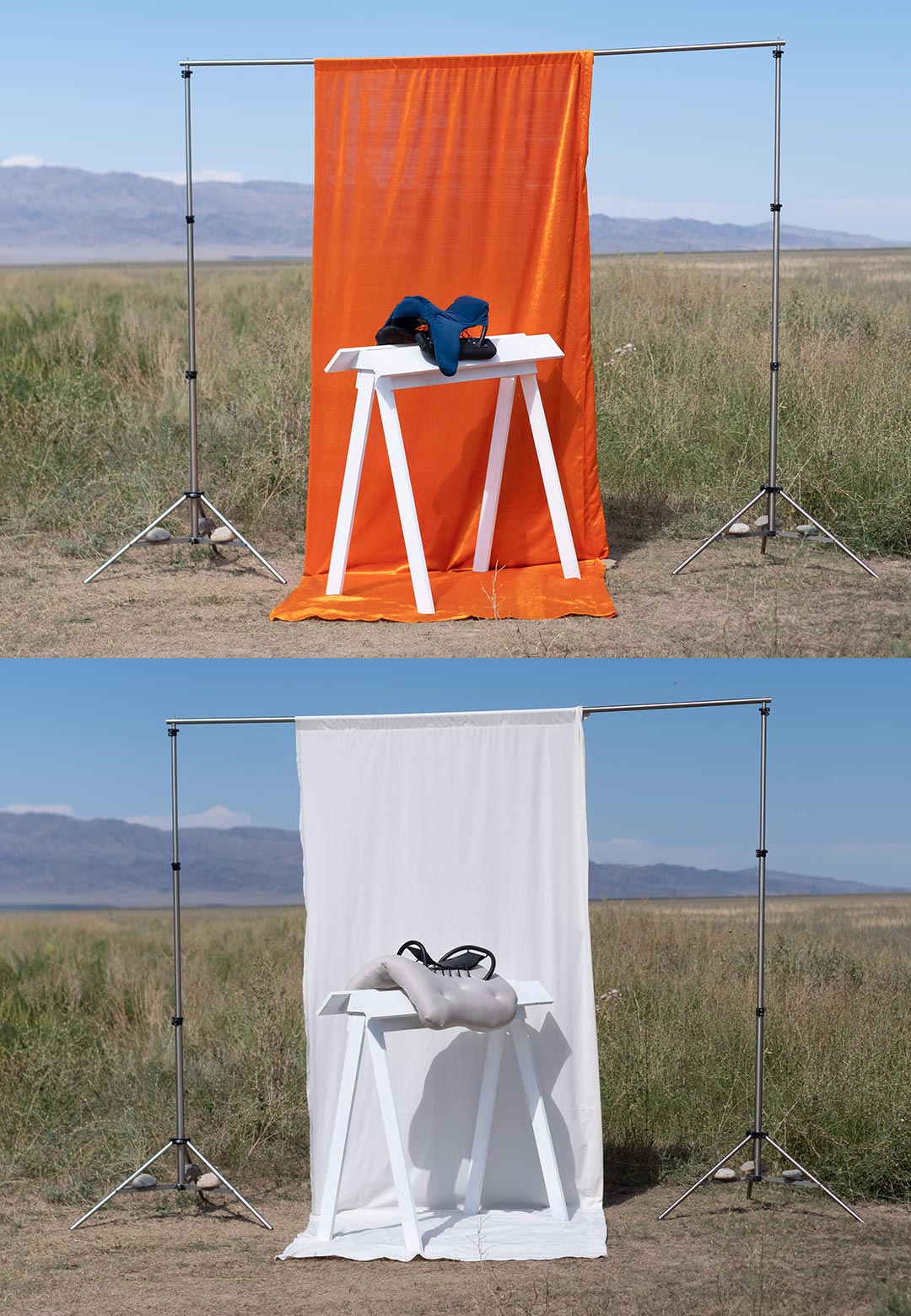After the Soviets attempted to demolish Central Asia's previous homogeneous context, Kazakh culture has been in constant search of identity. This part of Asia was adorned with a nomadic structure, using horses not only as a means of transportation but also for hunting; in Kazakhstan, horses are friends, transport, income and food. The first domestication of horses was documented around 4000 B.C. to 3000 B.C. by the Botai Civilization (now Kazakhstan). A rich nomadic culture wafts in the milieu of the multiethnic country—centuries of practices, rituals and wisdom waiting to be remembered, explored and reimagined. During the Cross Cultural Workshop, a group of local and international artists attempted to distinguish between sedentary (a chair) and nomadic culture (a horse saddle).
Cross Cultural Chairs by Sicilian designer Matteo Guarnaccia is a project that dives deep into the socio-cultural differences that singularise cultures through design and their ways of utilisation. In 2019, Guarnaccia carried out a creative investigation around the eight most populated countries in the world—Brazil, Mexico, Japan, Indonesia, China, India, Russia and Nigeria—partnering with a design studio in each country to conceive a chair design that represents the local culture and the way in which the local community interacts with the object. Continuing his project this year, Guarnaccia launched an experimental format together with local Kazakh designer Zhanna Ee and local curator Vlad Sludskiy, inviting 15 participants from all around the world to Kazakhstan. The workshop, following in the footsteps of the previous chapter, internalised research, design, production, and communication. The group designed five horse saddles—made by local artisans using both modern and ancient techniques—that epitomise various facets of Kazakh culture.
Saddle 1: Matteo Guarnaccia and Zhanna Ee
The handle is crucial for nomads—a differentiating component between tribes, while its shape and material helps a rider to identify the enemy. The wooden base of this saddle designed by Guarnaccia and Ee is an ode to a traditional way of crafting, and the thick metal handle inclines towards the unconventional and modern attempt to reinterpret the materiality. “The design aims to elevate the importance of a support between the back of the horse and its rider, as traditionally it has been done through the extensive use of cushioning,” the designers say. Made out of birch wood and steel, the object amalgamates the alternative use of materials and the traditional nomadic heritage that resides in the core of the design of a horse saddle.
Saddle 2: Lucas Momparler and Kayla Welsh
The concept of the saddle designed by Lucas Momparler and Kayla Welsh deliberately strays from the typical saddle shape towards a contemporary version of this iconic piece in Kazakh culture. The product design—employing birch wood, foam, fabric, elastic bands, leather, and metal—spotlights the contrast between the intensity of modern city life by adapting the shape to a contemporary context and the serene ambience of the rural countryside via the use of colours and patterns. The strong blue takes the centrestage—a unifying colour, found in both rural and modern landscapes. The sinuous lines trace the natural shape of the body allowing for seamless movement and achieving comfort for both the horse and the rider. “The bottom part of the main frame exposes a burst of colour and patterns that also act as an essential, yet hidden, part of the object, mirroring the combination of cultures woven together to create the vivid country of Kazakhstan we see today,” share the designers.
Saddle 3: Helena Postigo, Elena Ianeselli, and Nomundari Munkhbaatar
Helena Postigo, Elena Ianeselli, and Nomundari Munkhbaatar delved into and were driven by the heritage of the nomadic way of living. The inspiration sits conspicuously in the shape of the saddle featuring rounded smooth forms found in ancient saddles. Readapting the materiality and adding a new function to the saddle by adding hanging bags captures the timeless spirit of the nomads. The cover of the saddle is birthed from foam, steel, and a vintage raincoat found at the local market—a material that embodies resilience and durability to honour the environmental values that link to Kazakh’s connection to nature. “The muted colours resemble the steppes' landscape blending subtly with the ornaments and the black straps on the hanging bags on the sides, that provide extra storage for necessities during a long trip in the countryside or a quick walk in an urban scape,” the designers note.
Saddle 4: Belen Cabello, Anna Ziegler, and Timur Aktayev
Comprehending the difference between recurrent static lifestyle and a nomadic traditional way of living begins with comprehending the relationship between a horse and its rider, between an animal and a human. The concept of the saddle by Belen Cabello, Anna Ziegler, and Timur Aktayev stems from the discussion on whether the two can reconcile and the emotional connection that entails. The designers’ discourse led to more questions “whether the saddle becomes an object to give comfort for a horse or its rider, resulting in design decisions where comfort for one becomes central” and the focus turned to achieving optimum comfort for the horse through extensive cushioning where the saddle touches the horse’s skin. The seat for the human is designed to the bare minimum; stretched leather and exposed metal with no horn to hold on to and no stirrups to place your feet in exaggerate the idea of comfort and discomfort for both partakers in order to find that equilibrium.
Saddle 5: Daria Kokonja, Ryanne Flock, and Elena Chantzis
The design by Daria Kokonja, Ryanne Flock, and Elena Chantzis originated from impressions of contemporary Kazakhstan, where the individual self seems to be torn between various histories, cultures, and politics. "Visually, we found this concept reflected in the local household ritual of stocking objects, specifically duvets, and as a result, the integration between these two elements—layered identity and layered objects—is depicted in one design language," the designers share. An exposed metal and plastic frame contrast with the multicoloured arrangement of the soft fabric layers; the two are connected using screws, allowing for easy assemblage and replacement of the individual parts if necessary. Artificial felt was an intentional choice to clearly showcase the layering with an everyday material prevalent in local markets and shops, reminiscing the tradition of using natural felt in nomad culture. The leeway to personalise the saddle is not only pragmatic but also conforms to the fluidity of identity, adapting to the social, cultural, and political environment.
The Scythians developed the first saddles nearly 3000 years ago, and Saka developed an early form of saddles in Asia—a rudimentary frame that included two parallel leather cushions with girths attached, a pommel and cantle with detachable hardened leather facings, leather thongs, a crupper, a breastplate, and a felt shabrack adorned with animal motifs. Cross Cultural Chairs in collaboration with international designers tried to understand the role of horses in a society that is moving further away from nomadism in a contemporary context. At the end of the workshop, the five horse saddles were presented at the Kasteyev National Art Museum of Almaty in an exhibition supported by IED (European Institute of Design).






 Sign in with email
Sign in with email










What do you think?